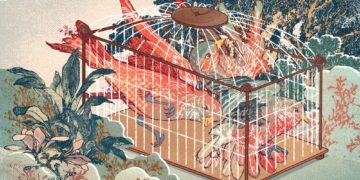Melinda Moyer in Scientific American:
 Amy Nitza has spent decades helping people in crisis. The director of the Institute for Disaster Mental Health at the State University of New York at New Paltz has traveled to Puerto Rico in the wake of Hurricane Maria, to Botswana during an HIV crisis and to Haiti to help traumatized children forced into domestic servitude. But the COVID-19 pandemic, Nitza says, is different. It keeps coming at people month after month as loved ones get sick or die, as jobs are lost, and as the actions taken to avoid infection—such as isolation from family—cause intense emotional pain and stress. As of December 2020, more than 1.6 million people around the globe have died from the coronavirus. Grief, fear and economic hardship have hit every nation. In the U.S. the numbers have been overwhelming: more than 300,000 people have died, and about 17 million have been infected with the virus, according to the Johns Hopkins Coronavirus Resource Center. Usually disasters have survivors and responders, Nitza says, but COVID is so widespread that people are both of those things at once. “We’re training everybody [on] how to take care of themselves and how to support the people around them,” she says.
Amy Nitza has spent decades helping people in crisis. The director of the Institute for Disaster Mental Health at the State University of New York at New Paltz has traveled to Puerto Rico in the wake of Hurricane Maria, to Botswana during an HIV crisis and to Haiti to help traumatized children forced into domestic servitude. But the COVID-19 pandemic, Nitza says, is different. It keeps coming at people month after month as loved ones get sick or die, as jobs are lost, and as the actions taken to avoid infection—such as isolation from family—cause intense emotional pain and stress. As of December 2020, more than 1.6 million people around the globe have died from the coronavirus. Grief, fear and economic hardship have hit every nation. In the U.S. the numbers have been overwhelming: more than 300,000 people have died, and about 17 million have been infected with the virus, according to the Johns Hopkins Coronavirus Resource Center. Usually disasters have survivors and responders, Nitza says, but COVID is so widespread that people are both of those things at once. “We’re training everybody [on] how to take care of themselves and how to support the people around them,” she says.
The upcoming winter looks especially dark and hard as deaths climb to exceed the losses of 9/11 every day. As soon as we hear that outbreaks are receding, they rise back up again like storm-tossed seas. Perhaps the toughest part is that no one knows when the pandemic will end or whether the future will look anything like the past. Vaccines are here for some health-care workers and nursing-home residents, but for most of us, they are still months away. At the moment, many hospitals are overwhelmed with waves of new COVID patients. “We as a nation have never been in anything like this,” says Charles Figley, who has worked in disaster psychology for 40 years and is director of the Traumatology Institute at Tulane University in New Orleans.
More here.
